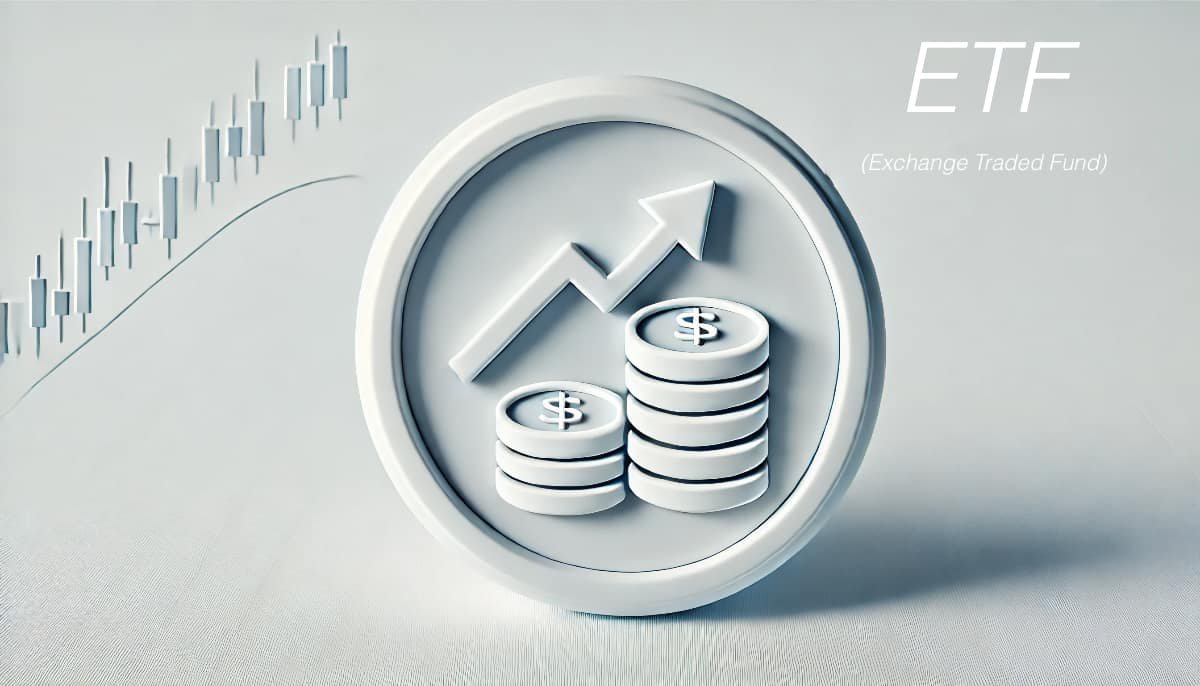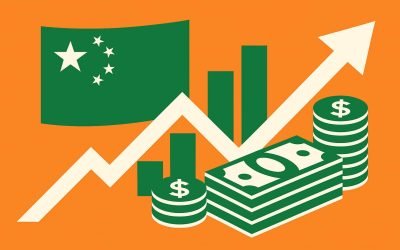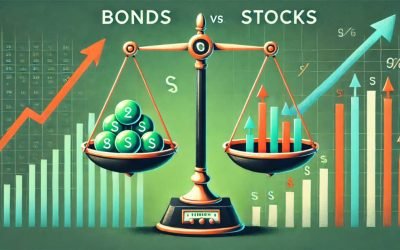Understanding ETFs: A Comprehensive Guide to Investing
Exchange-Traded Funds (ETFs) have become increasingly popular among investors due to their flexibility, diversity, and cost-effectiveness. This article aims to provide a thorough understanding of what ETFs are and how you can start investing in them. Whether you are a novice investor or looking to diversify your portfolio, this guide will offer valuable insights to help you make informed decisions.
What Are ETFs?
ETFs, or Exchange-Traded Funds, are investment funds that are traded on stock exchanges, much like individual stocks. They are designed to track the performance of a specific index, commodity, sector, or asset class. ETFs offer a way to invest in a broad range of assets without having to buy each one individually.
Key Features of ETFs
- Diversification: ETFs provide exposure to a wide range of assets, reducing the risk associated with investing in a single security.
- Liquidity: ETFs can be bought and sold on stock exchanges throughout the trading day, offering high liquidity.
- Cost-Effectiveness: ETFs generally have lower expense ratios compared to mutual funds, making them a cost-effective investment option.
- Transparency: ETFs disclose their holdings daily, providing investors with a clear view of the underlying assets.
Types of ETFs
There are various types of ETFs available, each catering to different investment strategies and goals. Understanding the different types can help you choose the right ETF for your portfolio.
Equity ETFs
Equity ETFs invest in stocks and aim to replicate the performance of a specific stock index, such as the FTSE 100 or the S&P 500. They offer exposure to a broad range of companies within a particular market or sector.
Bond ETFs
Bond ETFs invest in fixed-income securities, such as government bonds, corporate bonds, and municipal bonds. They provide a way to gain exposure to the bond market without having to purchase individual bonds.
Commodity ETFs
Commodity ETFs invest in physical commodities, such as gold, silver, oil, or agricultural products. They offer a way to invest in commodities without having to buy and store the physical assets.
Sector and Industry ETFs
Sector and industry ETFs focus on specific sectors or industries, such as technology, healthcare, or energy. They provide targeted exposure to particular areas of the market.
International ETFs
International ETFs invest in stocks or bonds from countries outside of the investor’s home country. They offer a way to diversify geographically and gain exposure to global markets.
Inverse and Leveraged ETFs
Inverse ETFs aim to deliver the opposite performance of a specific index, while leveraged ETFs use financial derivatives to amplify the returns of an index. These ETFs are more complex and are generally suited for experienced investors.
How to Start Investing in ETFs
Investing in ETFs can be a straightforward process if you follow these steps:
1. Determine Your Investment Goals
Before investing in ETFs, it’s essential to define your investment goals. Are you looking for long-term growth, income, or diversification? Understanding your objectives will help you choose the right ETFs for your portfolio.
2. Choose a Brokerage Account
To invest in ETFs, you’ll need a brokerage account. There are many online brokers to choose from, each offering different features, fees, and services. Compare your options and select a broker that aligns with your investment needs.
3. Research ETFs
Once you have a brokerage account, start researching ETFs that match your investment goals. Look at factors such as the ETF’s expense ratio, performance history, underlying assets, and liquidity. Many financial websites and tools can help you compare and analyse different ETFs.
4. Build a Diversified Portfolio
Diversification is key to managing risk in your investment portfolio. Consider investing in a mix of ETFs that cover different asset classes, sectors, and geographic regions. This approach can help spread risk and improve potential returns.
5. Place Your Order
After selecting the ETFs you want to invest in, place your order through your brokerage account. You can choose between a market order, which executes immediately at the current market price, or a limit order, which executes only at a specified price.
6. Monitor and Rebalance Your Portfolio
Regularly monitor your ETF investments to ensure they align with your investment goals. Over time, the performance of different ETFs may cause your portfolio to become unbalanced. Rebalancing involves adjusting your holdings to maintain your desired asset allocation.
Advantages of Investing in ETFs
ETFs offer several benefits that make them an attractive investment option:
- Low Costs: ETFs typically have lower expense ratios compared to mutual funds, reducing the overall cost of investing.
- Tax Efficiency: ETFs are generally more tax-efficient than mutual funds due to their unique structure and the way they are traded.
- Flexibility: ETFs can be bought and sold throughout the trading day, providing flexibility and liquidity.
- Diversification: ETFs offer exposure to a broad range of assets, helping to diversify your investment portfolio.
- Transparency: ETFs disclose their holdings daily, providing investors with clear information about the underlying assets.
Risks of Investing in ETFs
While ETFs offer many advantages, they also come with certain risks:
- Market Risk: The value of ETFs can fluctuate based on market conditions, leading to potential losses.
- Tracking Error: ETFs may not perfectly replicate the performance of their underlying index, resulting in tracking errors.
- Liquidity Risk: Some ETFs may have lower trading volumes, making it difficult to buy or sell shares at desired prices.
- Complexity: Certain ETFs, such as leveraged and inverse ETFs, can be complex and may not be suitable for all investors.
Comparing ETFs and Mutual Funds
ETFs and mutual funds are both popular investment vehicles, but they have some key differences:
| Feature | ETFs | Mutual Funds |
|---|---|---|
| Trading | Traded on stock exchanges throughout the day | Traded at the end of the trading day at the net asset value (NAV) |
| Expense Ratios | Generally lower | Generally higher |
| Minimum Investment | No minimum investment required | Often have minimum investment requirements |
| Tax Efficiency | More tax-efficient | Less tax-efficient |
| Transparency | Daily disclosure of holdings | Quarterly disclosure of holdings |
Common ETF Investment Strategies
Investors use various strategies to invest in ETFs, depending on their goals and risk tolerance:
Buy and Hold
This strategy involves purchasing ETFs and holding them for the long term. It is based on the belief that markets tend to rise over time, and long-term investments will yield positive returns.
Dollar-Cost Averaging
Dollar-cost averaging involves investing a fixed amount of money in ETFs at regular intervals, regardless of market conditions. This approach can help reduce the impact of market volatility and lower the average cost of investments over time.
Sector Rotation
Sector rotation involves shifting investments between different sectors based on economic cycles and market trends. Investors aim to capitalise on the performance of sectors that are expected to outperform in the current market environment.
Income Generation
Some investors focus on generating income through ETFs that pay dividends or interest. Bond ETFs and dividend-focused equity ETFs are popular choices for income generation.
Conclusion
ETFs offer a versatile and cost-effective way to invest in a wide range of assets. By understanding the different types of ETFs, their benefits, and risks, you can make informed investment decisions that align with your financial goals. Whether you are looking for diversification, income, or long-term growth, ETFs can be a valuable addition to your investment portfolio.

Q&A Section
Q1: What is an ETF?
A1: An ETF, or Exchange-Traded Fund, is an investment fund that is traded on stock exchanges and aims to track the performance of a specific index, commodity, sector, or asset class.
Q2: How do ETFs differ from mutual funds?
A2: ETFs are traded on stock exchanges throughout the day, have generally lower expense ratios, and offer more tax efficiency and transparency compared to mutual funds, which are traded at the end of the trading day at the net asset value (NAV).
Q3: What are the main types of ETFs?
A3: The main types of ETFs include equity ETFs, bond ETFs, commodity ETFs, sector and industry ETFs, international ETFs, and inverse and leveraged ETFs.
Q4: What are the advantages of investing in ETFs?
A4: The advantages of investing in ETFs include low costs, tax efficiency, flexibility, diversification, and transparency.
Q5: What are some common ETF investment strategies?
A5: Common ETF investment strategies include buy and hold, dollar-cost averaging, sector rotation, and income generation.
Here are a few great articles to help you understand ETFs (Exchange-Traded Funds) and how to start investing in them:
- Investopedia’s Guide on ETFs: This article gives a thorough overview of what ETFs are, how they work, and the different types available. It explains that ETFs are investment vehicles that pool together multiple securities, and they trade like individual stocks on an exchange. The article covers the advantages of ETFs, such as diversification, lower fees, and tax efficiency. It’s a fantastic starting point for anyone new to ETFs. You can learn more (Investopedia)
- ETF.com – Best ETFs for Beginners: The Complete Guide: This guide is ideal for beginners and provides detailed steps on how to get started with ETFs. It explains why ETFs are a good choice for those new to investing, focusing on their simplicity, diversification, and low costs. The article also discusses different types of ETFs, including equity and bond ETFs. Learn more here.
- Stash’s Beginner’s Guide to Investing in ETFs: This article breaks down the process of investing in ETFs into simple steps. It covers opening an investment account, researching the right ETFs for your goals, and purchasing shares. It also highlights the importance of setting up a regular investment schedule to turns over time. A helpful resource if you’re looking for a practical guide to ETF investing.
These articles will give you a solid foundation in understanding ETFs and how to start investing in them!















 How to trade CFD? (00:49)
How to trade CFD? (00:49) How to trade binary options*? (01:22)
How to trade binary options*? (01:22) Forex. How to start? (01:01)
Forex. How to start? (01:01)